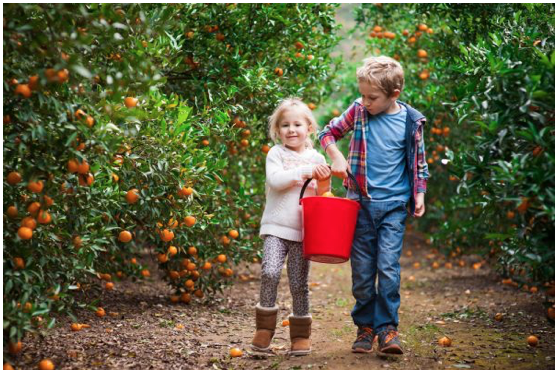WELLNESS--One of the simplest ways to improve your family’s diet? Plant a fruit tree. Or plant several.
The last time I was fortunate enough to have a yard, I planted four of them. Unfortunately, I broke up with my then-boyfriend and moved out right about the time all four began producing fruit.
Fortunately, however, I landed just a few blocks away, in a small apartment complex with nine fruit trees planted on the property: pomegranate, grapes, figs, and several varieties of citrus. My first goal was to find out who was eating the fruit… and how much of it they’d share with me.
The answer was all good news. The neighbors only really ate the oranges and a few of the lemons and figs. The rest was mine.
Mature fig trees can produce an incredible number of figs. After the effort you expend to plant the tree, almost no work is required apart from picking and eating figs once a year.
I’ve since moved to a different part of that town, but I still show up to pick figs every summer. This summer, I’ve already picked over 25 pounds, made two batches of jam, eaten countless figs myself, and shared plenty more with friends.
Meanwhile, another friend with blackberry brambles has more blackberries than she knows what to do with. We’ve arranged to trade berries for figs.
In the cases of both figs and berries, there’s nothing like eating fruit ripe from the vine. You can allow the fruit to fully ripen before picking it, because — unlike the supermarket — you don’t need to worry about it keeping for days while it’s shipped across the country.
While homegrown lemons and limes are no more ripe than the ones from the store, I love the convenience of picking a lemon when I need it for a recipe instead of having to remember to get it from the store ahead of time.
Of course, most of the country can’t grow the citrus and tropical fruits we’re blessed with here in San Diego. But wherever you live, you can grow something, and local nurseries will have appropriate trees for your area. Colder climates are often known for their berries and apples.
Other perennials like rhubarb and asparagus can feed you year after year as well, with little work after they’re planted.
Gardening can be time consuming, and it can require expertise. It certainly requires enough planning and forethought to get the right seeds in the ground at the right time each year. Then there’s weeding and watering on top of that.
Fruit trees, on the other hand, are an easy source of free, fast food after you do the initial legwork to pick a variety that thrives in your area and plant it in a location that suits it.
They are a gift that keeps on giving. If you move out of your house, they continue giving to whoever moves in next. My ex was the beneficiary of the four trees I planted. He recently moved out, and the new tenant is getting all the goodies. It’s a gift that keeps on giving.
(Jill Richardson is the author of Recipe for America: Why Our Food System Is Broken and What We Can Do to Fix It. Provided to CityWatch by OtherWords.org)
-cw

















